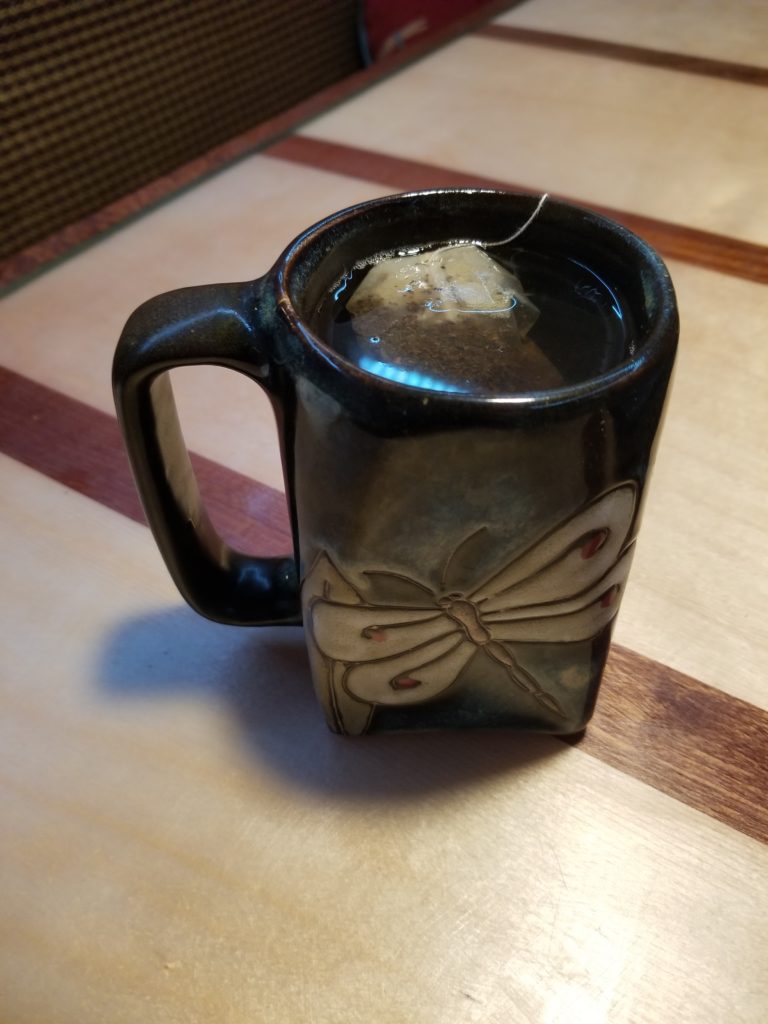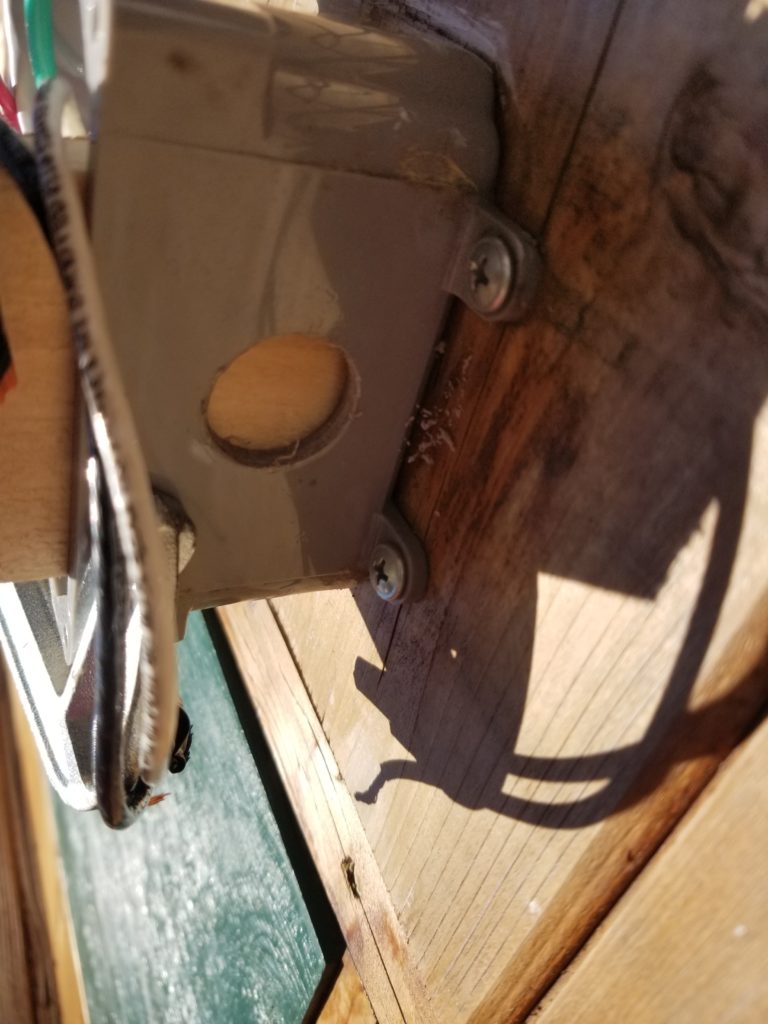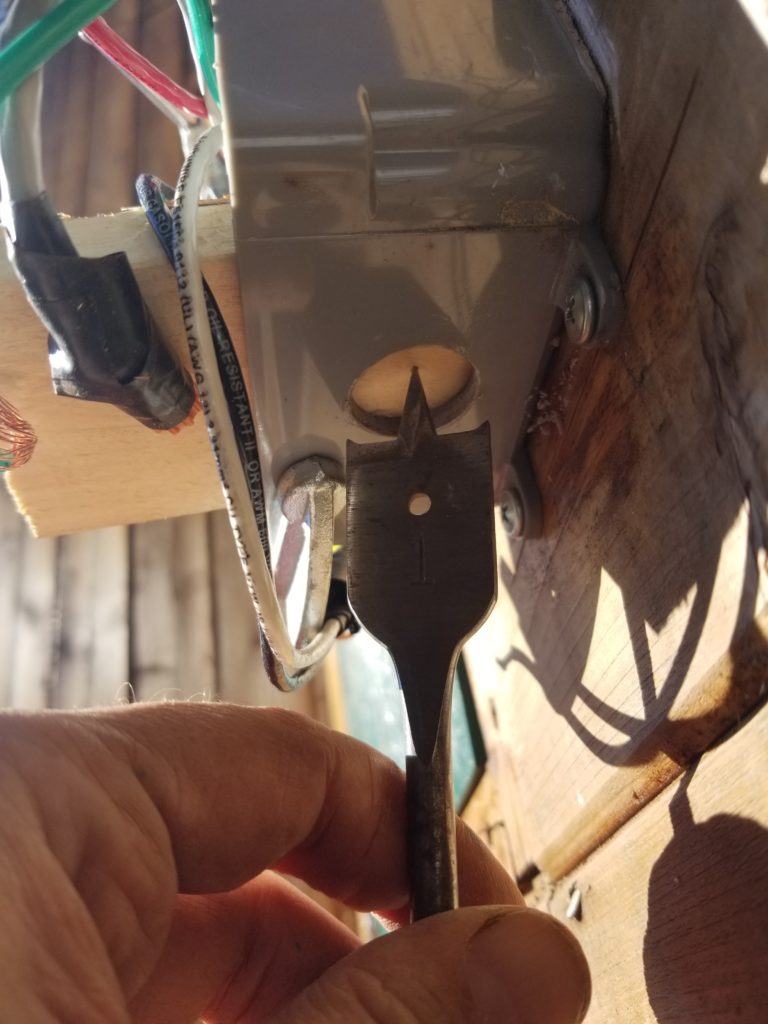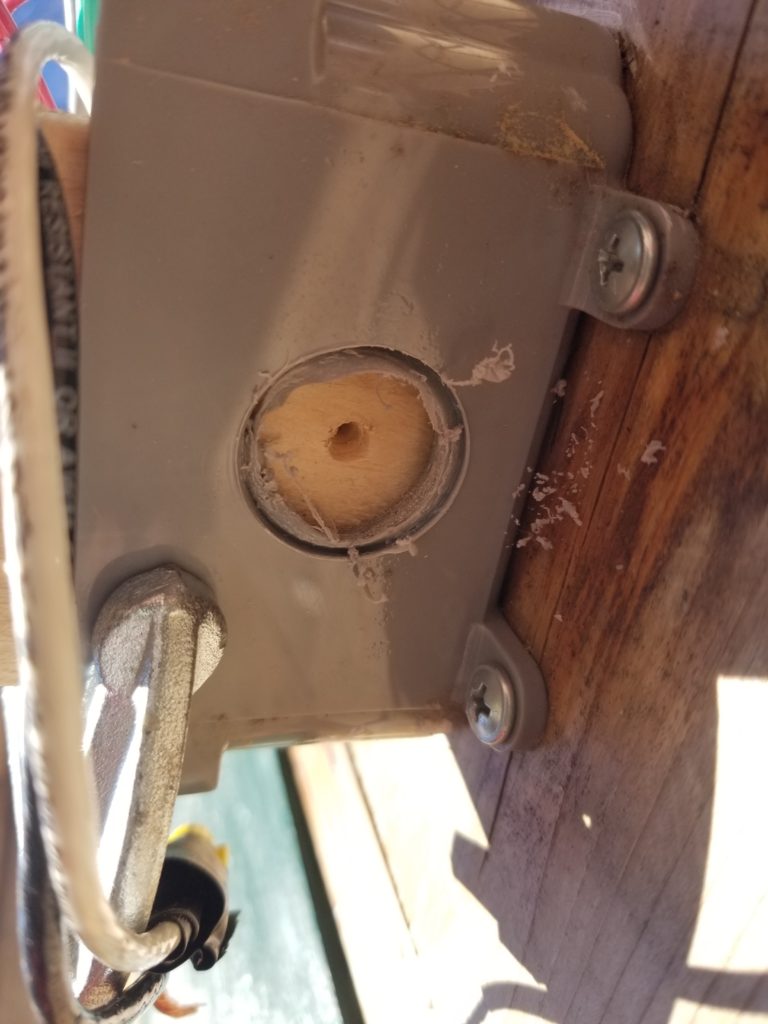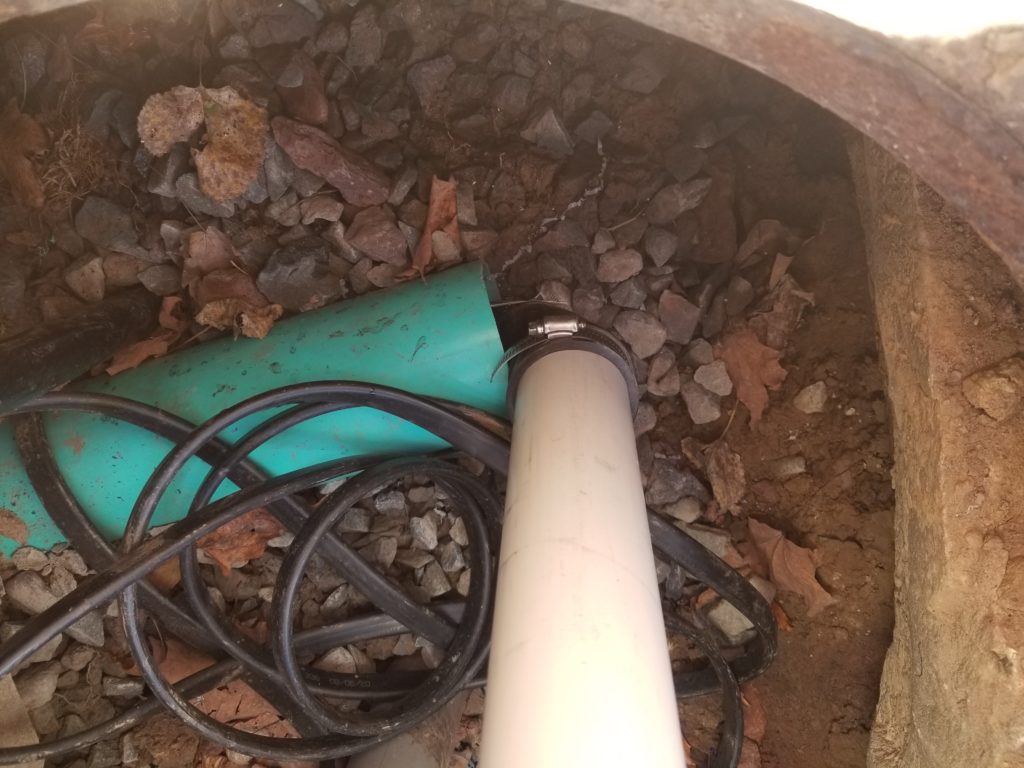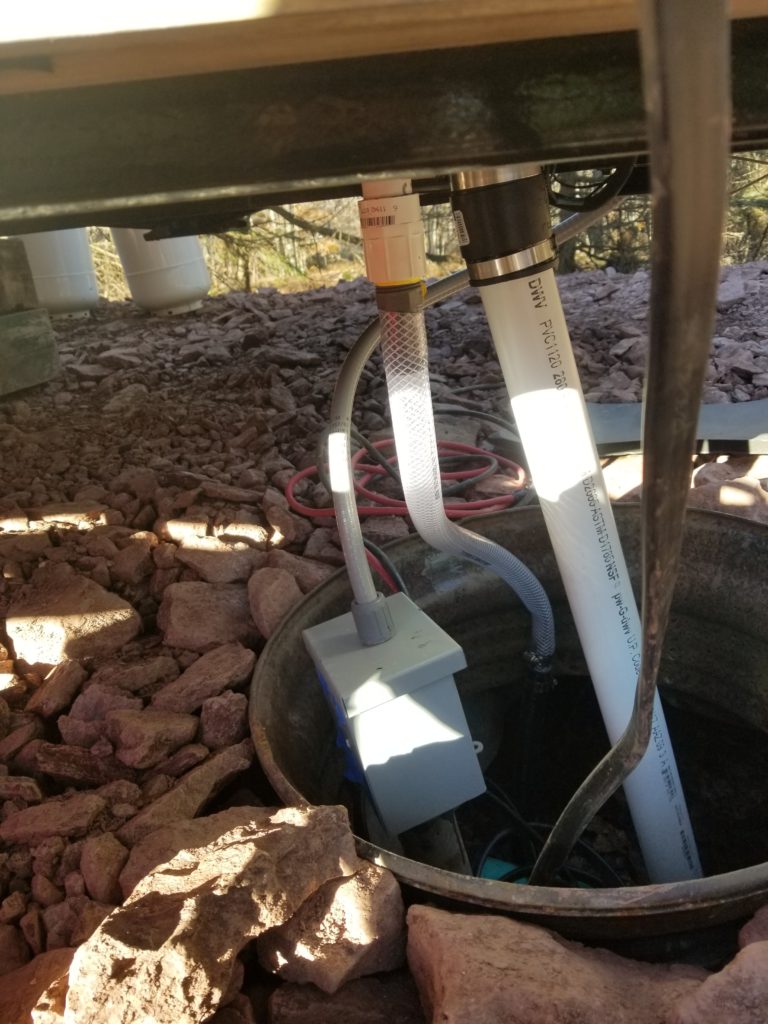This isn’t your ordinary RV that just hooks up directly to the utility post at some camp site. No, there’s nothing standard about any of this! My site work guy (my friend the excavator) brought the water supply (1″ flexible pipe) and drain lines (4″ PVC) to the location I asked him to, but left them as just open pipes. There’s a coil of wire in there that goes to the well pump, also not terminated in any particular way. The conduit to the solar array also comes in to the utility pit, sporting a pair of heavy AWG 2 wires. All this needs to somehow interface with my little house. I have junction boxes for the solar & well pump, but right now they have the house-side of the wires but no interface to the outside world. I have a 2″ pipe sticking out the bottom of the Propane Porch where my drain drains and a 1″ pipe expecting water supply, but no connectors on either of those, either.
Time to make this all happen. Let’s start with the well pump wire. As it turns out, the well pump wire is thicker than I expected and the hole I drilled in the junction box for the cable clamp is too small for the larger clamp I need. It’s pretty hard to enlarge a hole neatly in plastic. Then I had an idea – clamp a backer board inside the box so my drill bit could have affirmative purchase on something while it made the hole 1/4″ bigger. This worked nicely.
With the well pump electrical all set, time to move on to the water supply line, yes? Yes! Since none of the utility lines was particularly aligned with their corresponding ports on the HomeBox, some flexible tubing was definitely the right answer here. However, I seem to have over-estimated the length of tubing and it kinked a bit. Not so much that the water couldn’t get past, but still, it shouldn’t be kinked. The right answer here is to cut down the black feed pipe a bit so the tubing takes a gentler arc.
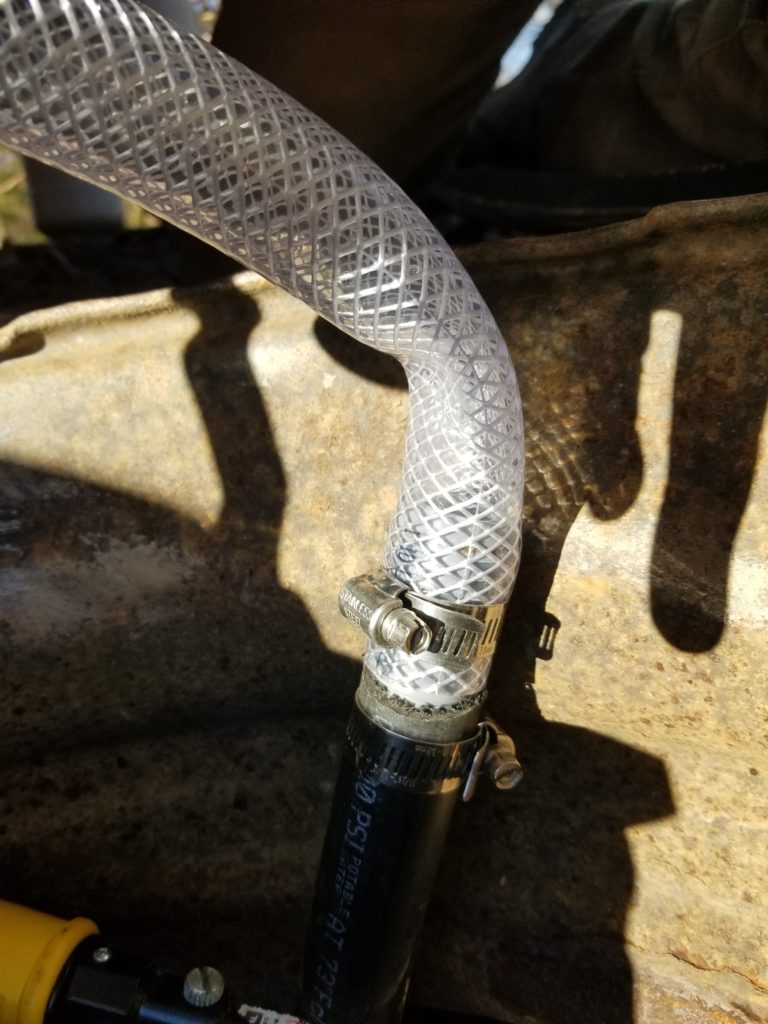
This is down in the utility pit a ways, which is also directly under the Propane Porch now, making it pretty challenging to do any significant work such as trying to get a decent angle to cut the black plastic pipe. Fortunately, I had this handle that takes Sawzall blades that I could use to trim the black pipe without needing a lot of clearance or a particularly good angle.
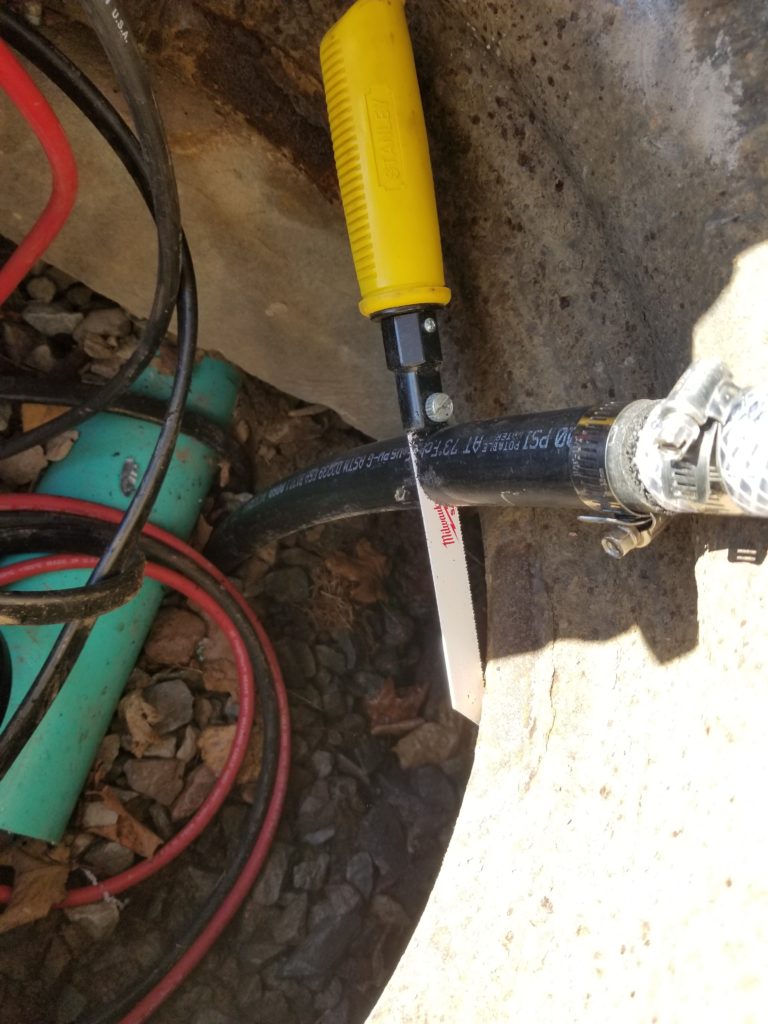
There’s a good reason the supply pipe is opaque – sunlight is bad for water lines. It encourages things to grow in them and that’s definitely unwanted. I couldn’t find any flexible tubing that was opaque at my local store, so I just wrapped this tubing in vinyl tape to black it out.
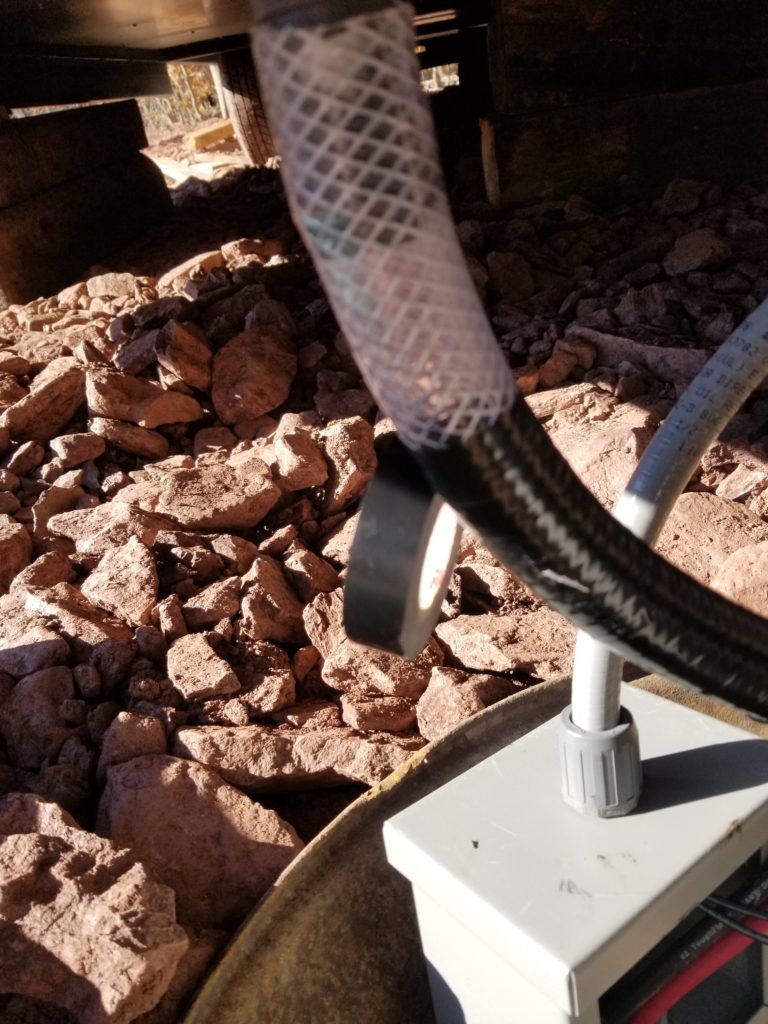
No need to get fancy with the drain line. Since it’s already sloped, I didn’t even bother to make a water-tight coupling here, which would be a bunch of work there at the bottom of the pit. Instead, I just slipped in a length of pipe, then elbowed up to a riser, and a rubber coupling to the drain port on the house so it could be a bit out of alignment and still be okay. And it was. Even a heavy rush of drain water didn’t back up into the pit.
Okay! Water supply, drain, all hooked up. Let’s get some water!
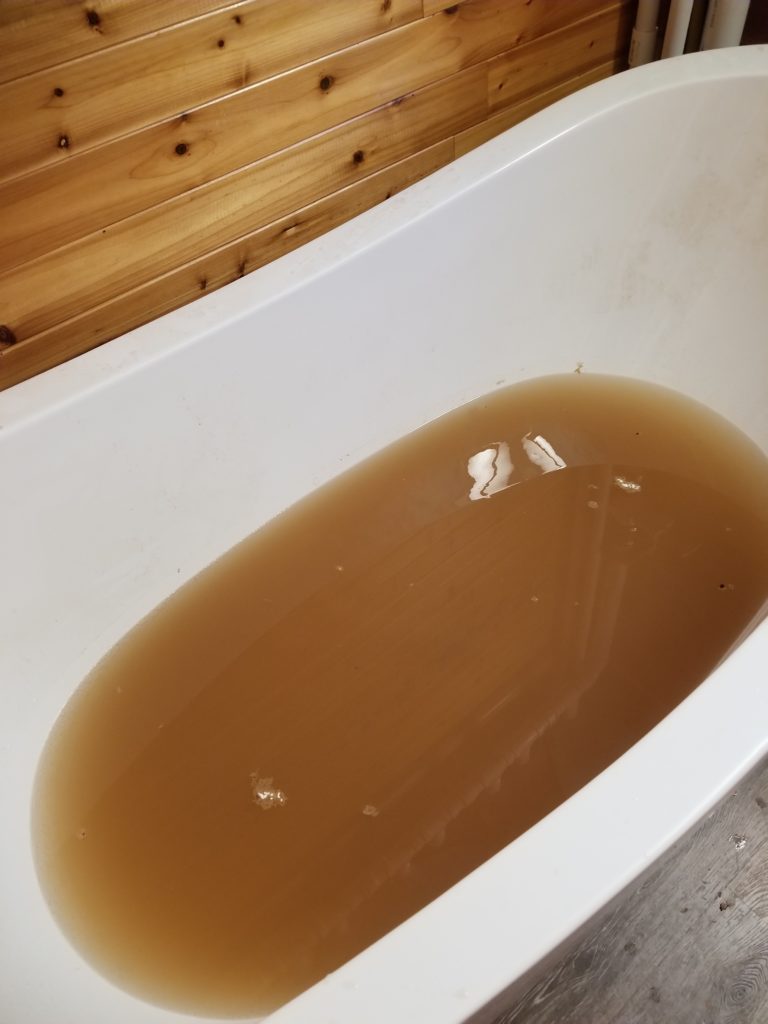
Another ten tanks or so and this cleared up 🙂 Evidently, it’s not uncommon to run a new well (or a newly serviced one that had been idle for a quarter century) quite a lot to flush it out.
The last of the hookup is for the solar. Before I do that, though, I wanted to tidy up that awful tangled mess of wires at the array.
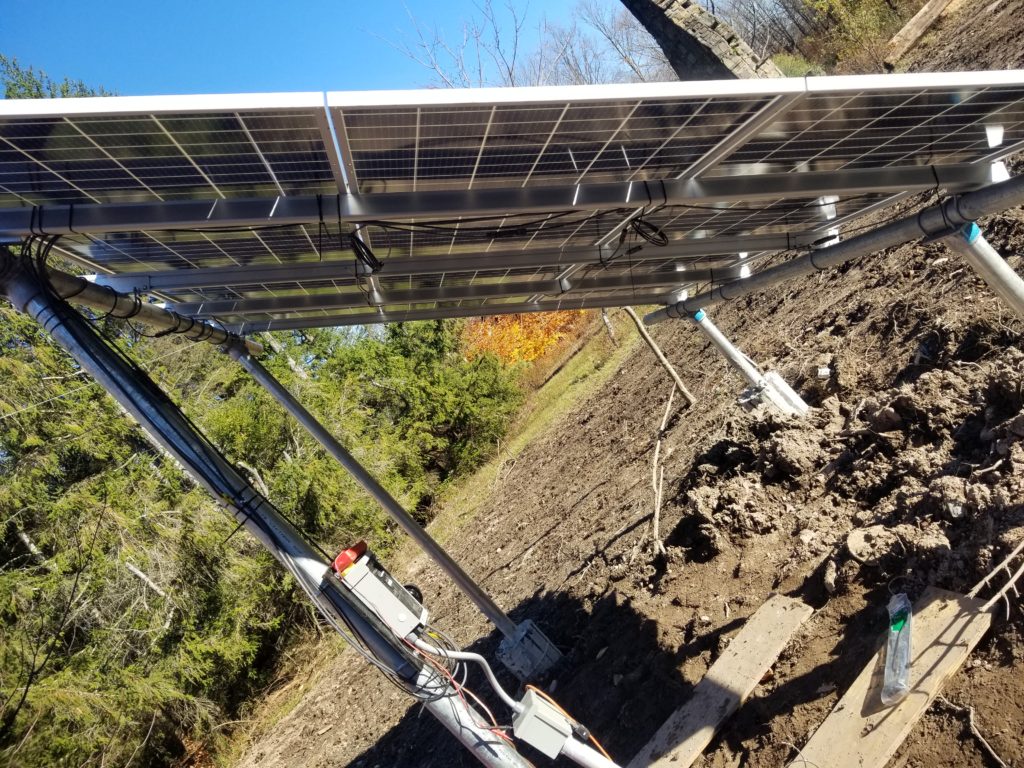
THAT’S BETTER. No more spider web! Now triple check the voltages and polarities at the breakers (good) then go into the house to let the electrons flow. The blue LED on the surge protector is a good sign. It means there’s power flowing in.
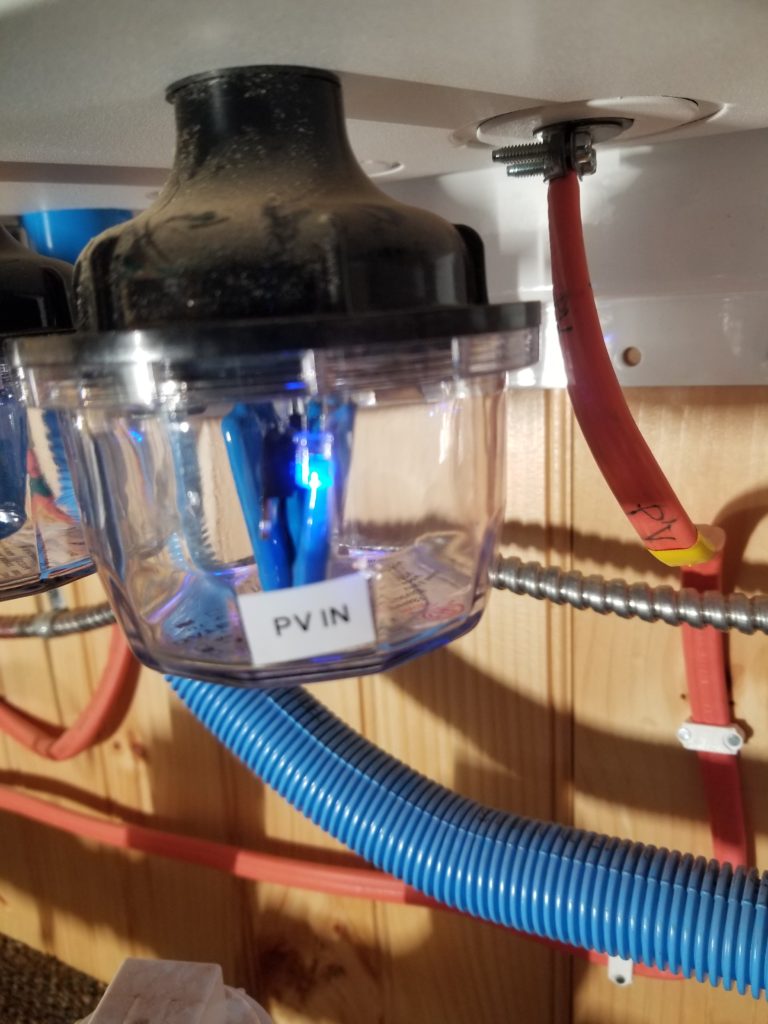
And this is the status of the solar charge controller, showing a healthy harvest of 1600 watts from the first array, My nominal energy budget is 4kWh/day, so at 1600W, I only need 2.5 hours. Of course it won’t always be sunny and clear, so being able to get a full day’s energy in 2.5h when it is sunny is a good sign that on average I should be able to have plenty of energy most of the time, except when it’s prolonged overcast.
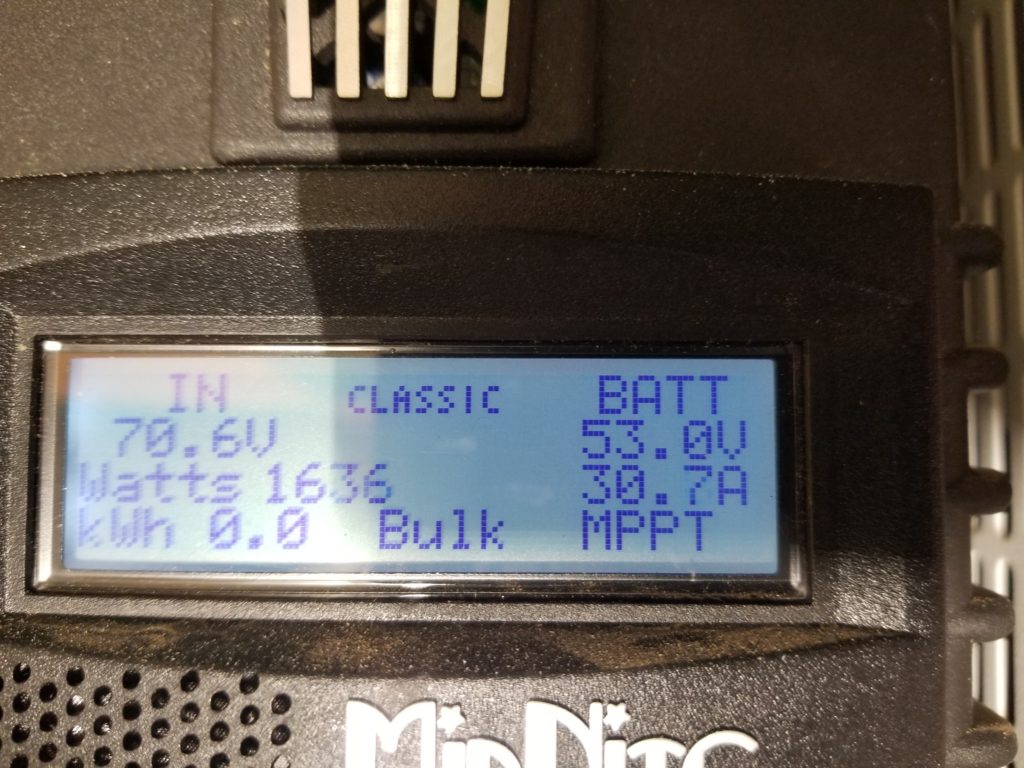
That said, I did notice the charge controller was still managing to collect energy even at twilight — sure, it was quite a bit less than this, but it was something and that is encouraging for making it through overcast days. I’ll be interested to see how energy collection goes on a gray day.
This is a cup of tea:
